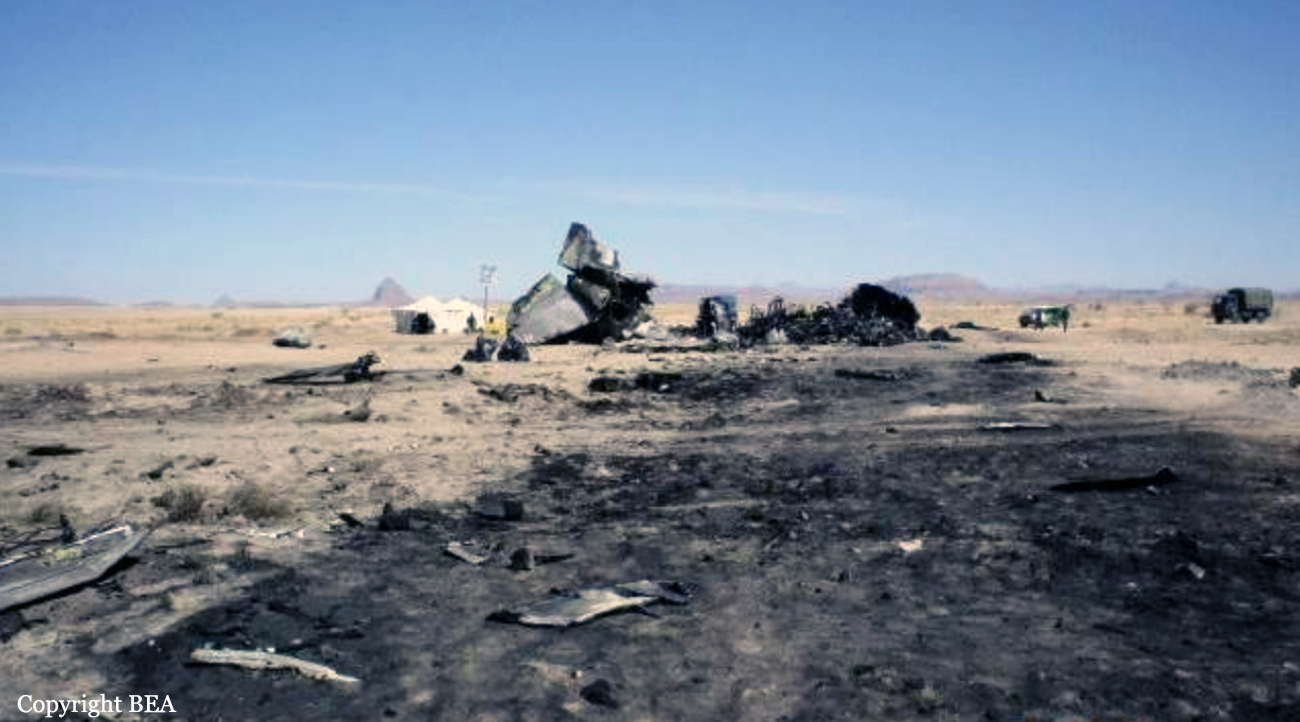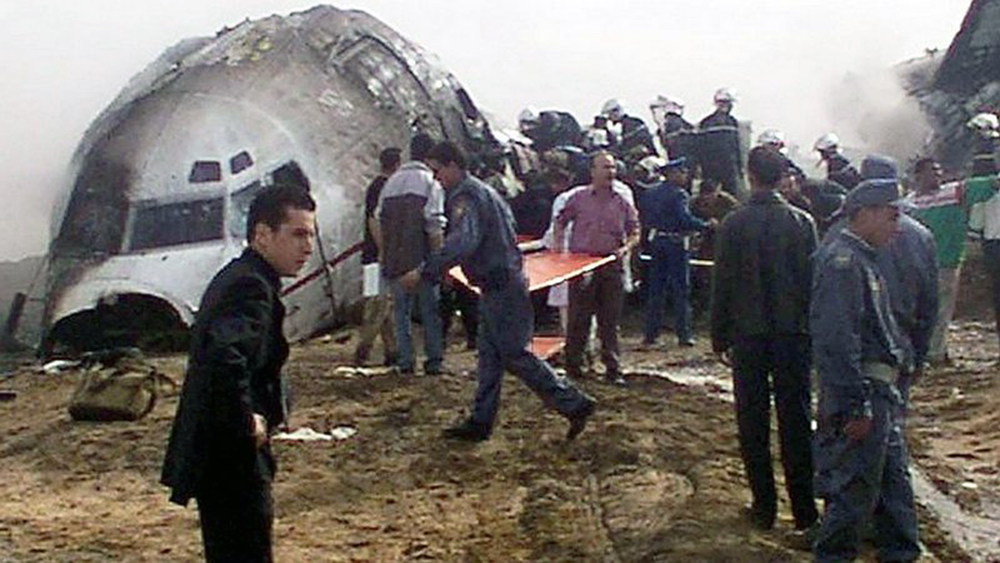Country
Crash of a Boeing 737-200 in Lima
Date & Time:
Dec 13, 2003 at 2248 LT
Registration:
OB-1544-P
Survivors:
Yes
Schedule:
Caracas - Lima
MSN:
20956
YOM:
1974
Flight number:
ACQ341
Crew on board:
6
Crew fatalities:
Pax on board:
94
Pax fatalities:
Other fatalities:
Total fatalities:
0
Aircraft flight hours:
62716
Aircraft flight cycles:
62162
Circumstances:
Following an uneventful flight from Caracas, the crew started the approach to Lima-Callao-Jorge Chávez Airport when the crew noted an asymmetric warning with the flaps. The crew decided to continue the approach but failed to lower the undercarriage. The aircraft belly landed at a speed of 190 knots and slid on runway 15 for 2,347 metres before coming to rest. All 100 occupants escaped uninjured while the aircraft was damaged beyond repair.
Probable cause:
Failure of the crew to verify and check the Non Normal Checklist of the Quick Reference Handbook (QRH) due to technical problems at the time of approach and landing, causing the omission of the extension of the gear and subsequent contact of the aircraft with the runway with landing gear retracted. The following findings were identified:
- During the approach, an indication of flap asymmetry presented.
- Due to the tightness of the itinerary programmed by the company, the total flight hours and the flight's working day were within the limits of the maximum allowed by the RAP, which could have influenced (due to fatigue) the poor performance by the crew.
- The lack of recording of some parameters of the flight recorders (FDR and CVR) prevented the resolution of some important and useful details for the investigation.
- The flap asymmetry indication, due to an indication fault in the Flap Position Indicator caused by high electrical resistance originating from the winding inside the synchro transmitter of the right side Flap Position Transmitter.
- The omission of the use in the approach phase of the procedures described in the QRH for this type of abnormal situations.
- The lack of decision to carry out a Go Around, taking into account that the period of time to carry out the QRH procedures for this abnormal situation was not going to be enough.
- Overconfidence (complacency) during the approach phase under abnormal conditions (indication of flap asymmetry).
- Lack of Crew Resource Management during the approach and landing phases, especially under abnormal conditions.
- Lack of leadership during the abnormal situation presented.
- Lack of communication with the Control Tower about the abnormal conditions in which the approach and landing were to be carried out.
- Itinerary very adjusted to the limits of flight hours and working hours, established by the RAP.
- During the approach, an indication of flap asymmetry presented.
- Due to the tightness of the itinerary programmed by the company, the total flight hours and the flight's working day were within the limits of the maximum allowed by the RAP, which could have influenced (due to fatigue) the poor performance by the crew.
- The lack of recording of some parameters of the flight recorders (FDR and CVR) prevented the resolution of some important and useful details for the investigation.
- The flap asymmetry indication, due to an indication fault in the Flap Position Indicator caused by high electrical resistance originating from the winding inside the synchro transmitter of the right side Flap Position Transmitter.
- The omission of the use in the approach phase of the procedures described in the QRH for this type of abnormal situations.
- The lack of decision to carry out a Go Around, taking into account that the period of time to carry out the QRH procedures for this abnormal situation was not going to be enough.
- Overconfidence (complacency) during the approach phase under abnormal conditions (indication of flap asymmetry).
- Lack of Crew Resource Management during the approach and landing phases, especially under abnormal conditions.
- Lack of leadership during the abnormal situation presented.
- Lack of communication with the Control Tower about the abnormal conditions in which the approach and landing were to be carried out.
- Itinerary very adjusted to the limits of flight hours and working hours, established by the RAP.
Final Report:
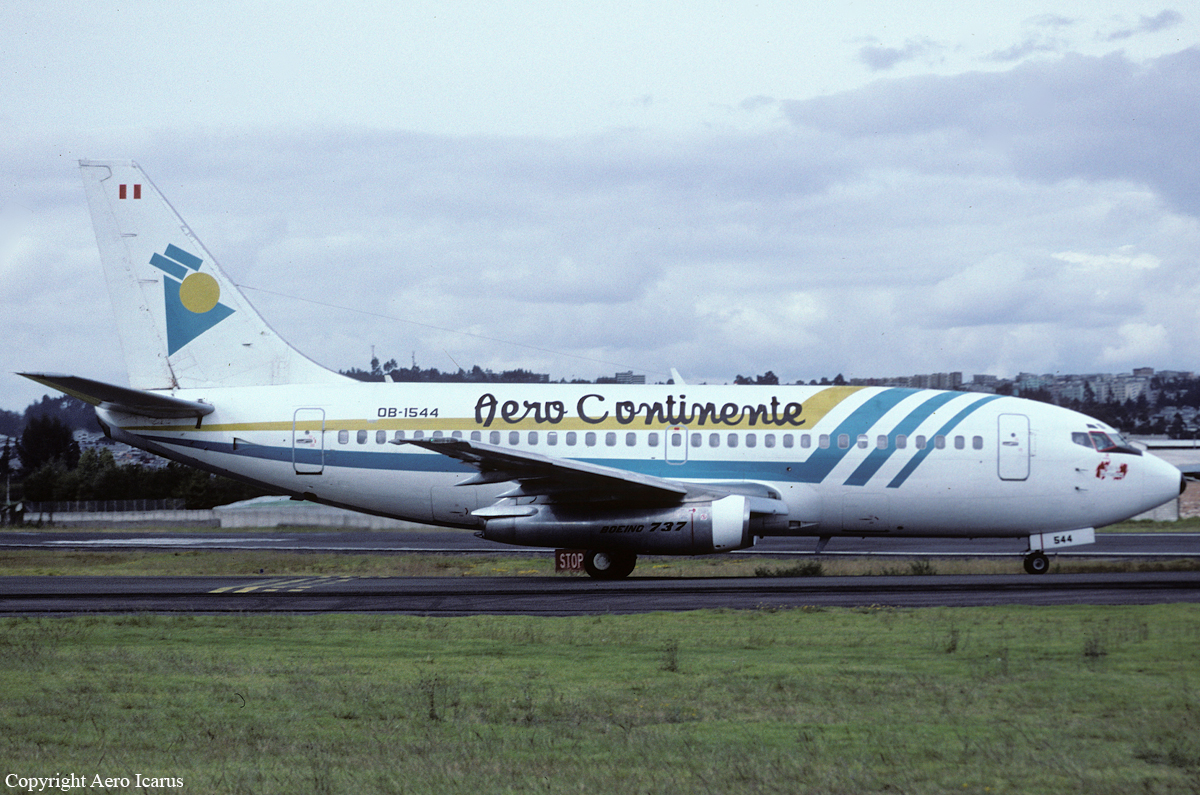
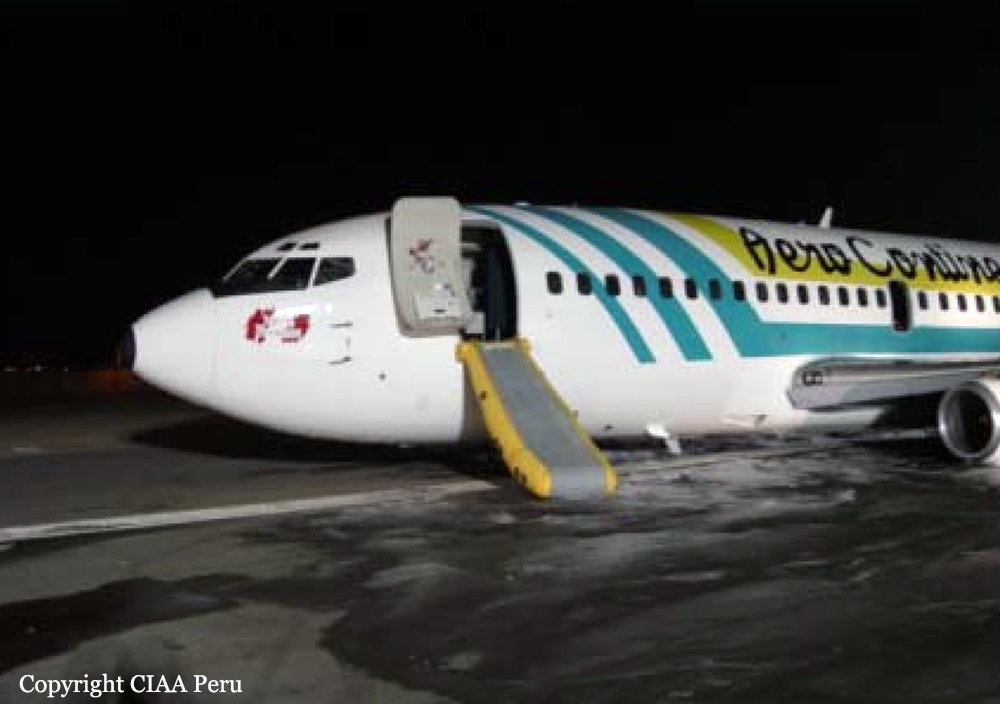
Crash of a Boeing 737-2J8C in Port Sudan: 116 killed
Date & Time:
Jul 8, 2003 at 0417 LT
Registration:
ST-AFK
Survivors:
Yes
Schedule:
Port Sudan - Khartoum
MSN:
21169
YOM:
1975
Flight number:
SD139
Crew on board:
11
Crew fatalities:
Pax on board:
106
Pax fatalities:
Other fatalities:
Total fatalities:
116
Circumstances:
The aircraft departed Port Sudan Airport at 0407LT on a schedule service to Khartoum with 105 passengers and 11 crew members on board. During climbout, the crew informed ATC about technical problems and was cleared to return for an emergency landing on runway 33. On final approach in limited visibility, the aircraft struck the ground and crashed about 5 km from the runway threshold. The aircraft was totally destroyed by impact forces. A boy aged two was injured while 116 other occupants were killed, among them eight EU citizens and one high ranking officer of the Sudan Army.
Probable cause:
Failure of one engine during initial climb for unknown reasons.

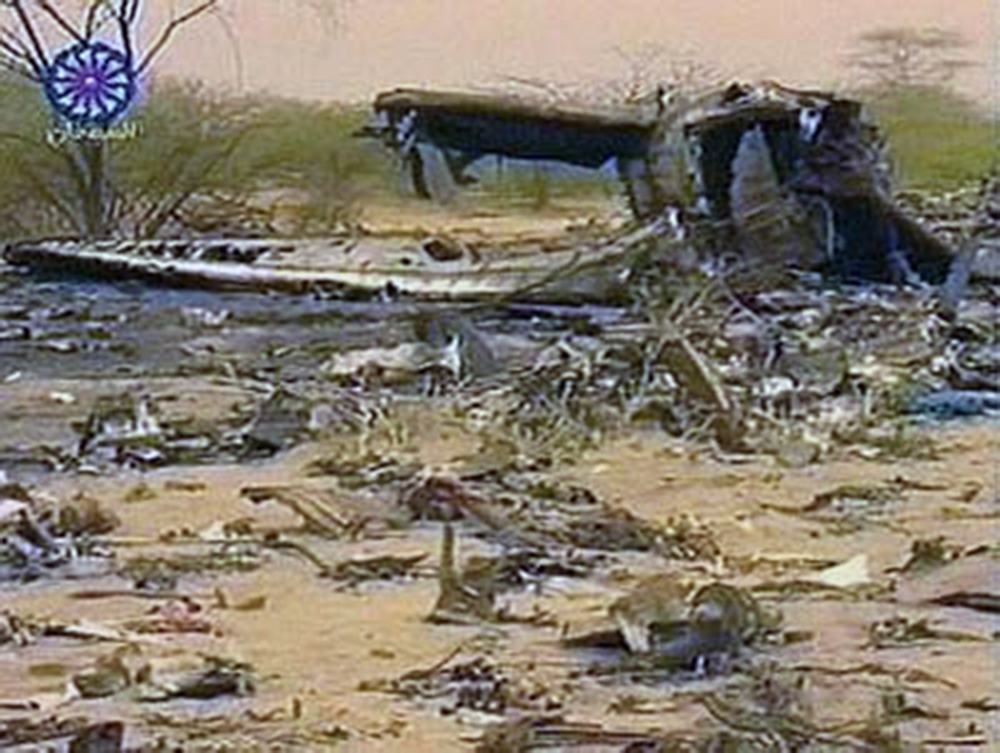

Crash of a Boeing 737-2T4 in Tamanrasset: 102 killed
Date & Time:
Mar 6, 2003 at 1515 LT
Registration:
7T-VEZ
Survivors:
Yes
Schedule:
Tamanrasset - Ghardaia - Algiers
MSN:
22700
YOM:
1983
Flight number:
AH6289
Crew on board:
6
Crew fatalities:
Pax on board:
97
Pax fatalities:
Other fatalities:
Total fatalities:
102
Captain / Total hours on type:
1087.00
Copilot / Total hours on type:
1292
Aircraft flight hours:
41472
Aircraft flight cycles:
27184
Circumstances:
The aircraft was taking off from Tamanrasset to undertake, with a three-hour delay, scheduled flight DAH 6289 to Ghardaïa and Algiers. Six crew members (two flight crew and four cabin crew) and 97 passengers were on board. The co-pilot was pilot flying. No technical exemptions or deferred maintenance items applied to the airplane; on departure from Algiers it had been subject to routine maintenance for a minor technical problem, a hydraulic pump having been changed in the circuit B landing gear bay. The speeds decided on by the crew were V1 = 144 kt, VR = 146 kt, V2 = 150 kt. The EPR displayed was 2.18, that is to say nominal maximum thrust on take-off. At 14 h 01 min 37 s, the crew requested start-up clearance. At 14 h 08 min 36 s, the tower cleared the airplane to taxi, enter and taxi up runway 02. The wind was 330 at 12 kt. At 14 h 12 min 30 s, the co-pilot called out “we’re ready”. At 14 h 12 min 31 s, the tower cleared flight 6289 to line up and take off. At 14 h 13 min 36 s, flight DAH 6289 announced take-off. About five seconds after airplane rotation, at the moment when gear retraction was requested, a sharp thumping noise was recorded on the CVR. The airplane’s heading veered to the left, followed by a track correction. The Captain announced that he was taking over the controls. A short time later, the co-pilot told the control tower “we have a small problem”. The airplane continued to climb and reached a recorded height of about 400 ft. The speed dropped progressively from 160 kt during airplane lift-off to stall speed at the end of the recording. In fact, about ten seconds before, the noise of the stick shaker is heard on the CVR (which usually indicates that the airplane is 7% from its stall speed). The “Don’t Sink” aural warning, which normally indicates a loss of altitude during take-off when the airplane is below nine hundred feet, appeared about six seconds before the end of the recording. The airplane, with landing gear extended, struck the ground on its right side. A severe fire broke out immediately. The airplane slid along, losing various parts, struck and knocked over the airport perimeter fence then crossed a road before coming to a halt in flames. The control tower immediately sounded the alert.
Probable cause:
Probable causes:
The accident was caused by the loss of an engine during a critical phase of flight, the non-retraction of the landing gear after the engine failure, and the Captain, the PNF, taking over control of the airplane before having clearly identified the problem.
The following factors probably contributed to the accident:
• the perfunctory flight preparation, which meant that the crew were not equipped to face the situation that occurred at a critical moment of the flight;
• the coincidence between the moment the failure occurred and the request to retract the landing gear;
• the speed of the event that left the crew little time to recover the situation;
• maintaining an inappropriate rate of climb, taking into account the failure of one engine;
• the absence of any teamwork after the engine failure, which led to a failure to detect and correct parameters related to the conduct of the flight (speed, rate of climb, configuration, etc.);
• the takeoff weight being close to the maximum with a high aerodrome altitude and high temperature;
• the rocky environment around the aerodrome, unsuitable for an emergency landing.
The accident was caused by the loss of an engine during a critical phase of flight, the non-retraction of the landing gear after the engine failure, and the Captain, the PNF, taking over control of the airplane before having clearly identified the problem.
The following factors probably contributed to the accident:
• the perfunctory flight preparation, which meant that the crew were not equipped to face the situation that occurred at a critical moment of the flight;
• the coincidence between the moment the failure occurred and the request to retract the landing gear;
• the speed of the event that left the crew little time to recover the situation;
• maintaining an inappropriate rate of climb, taking into account the failure of one engine;
• the absence of any teamwork after the engine failure, which led to a failure to detect and correct parameters related to the conduct of the flight (speed, rate of climb, configuration, etc.);
• the takeoff weight being close to the maximum with a high aerodrome altitude and high temperature;
• the rocky environment around the aerodrome, unsuitable for an emergency landing.
Final Report:


